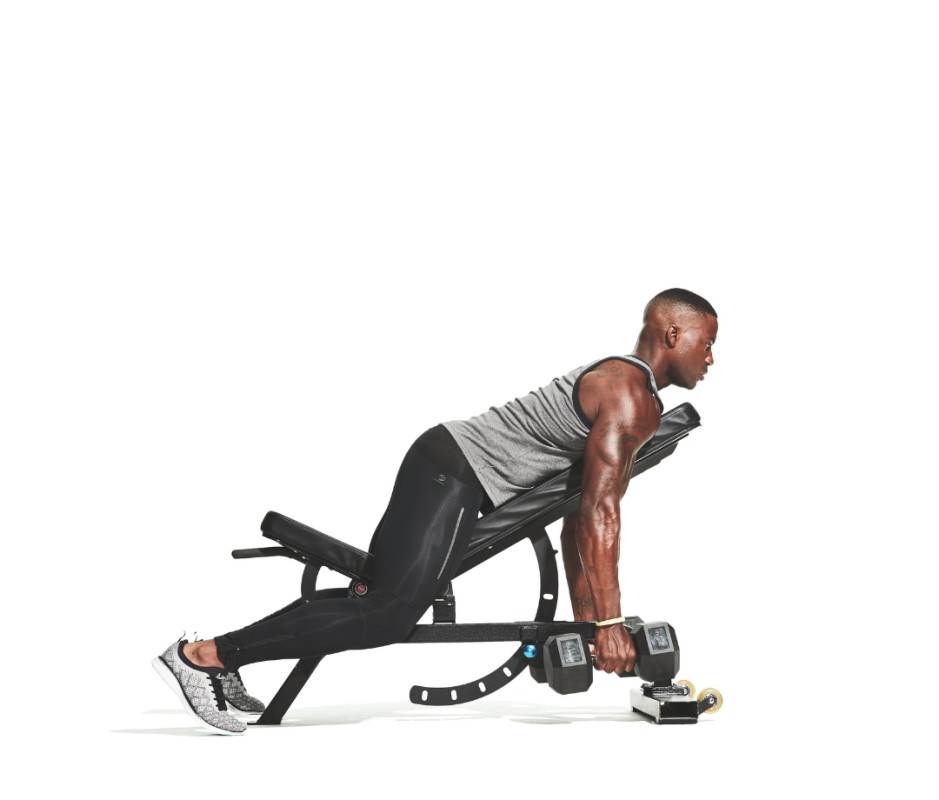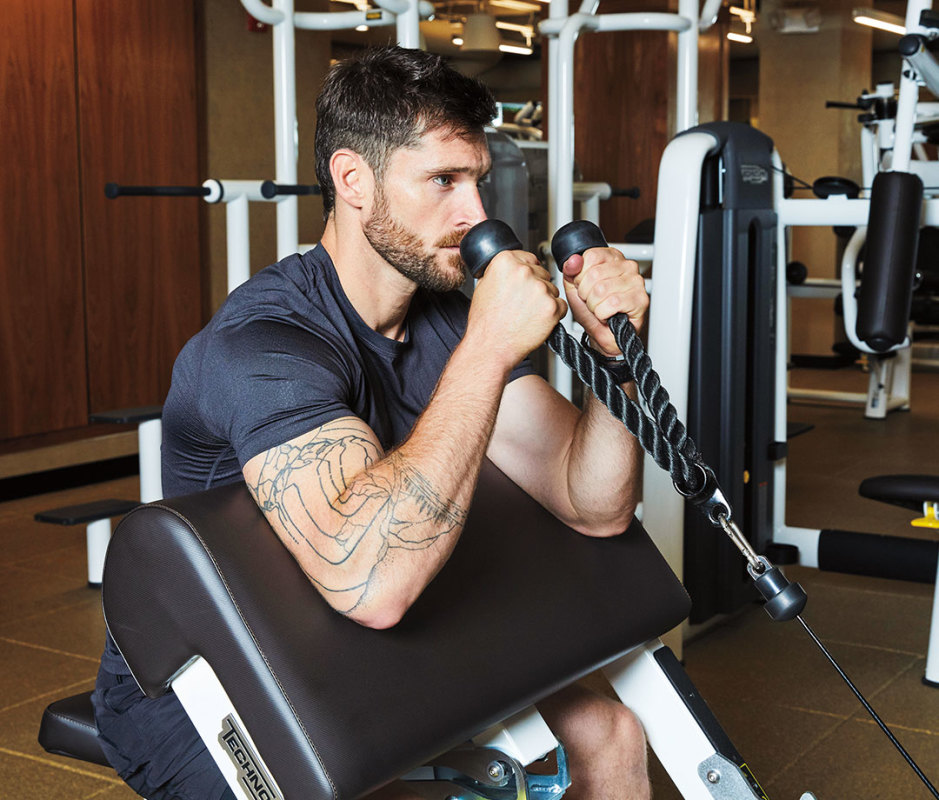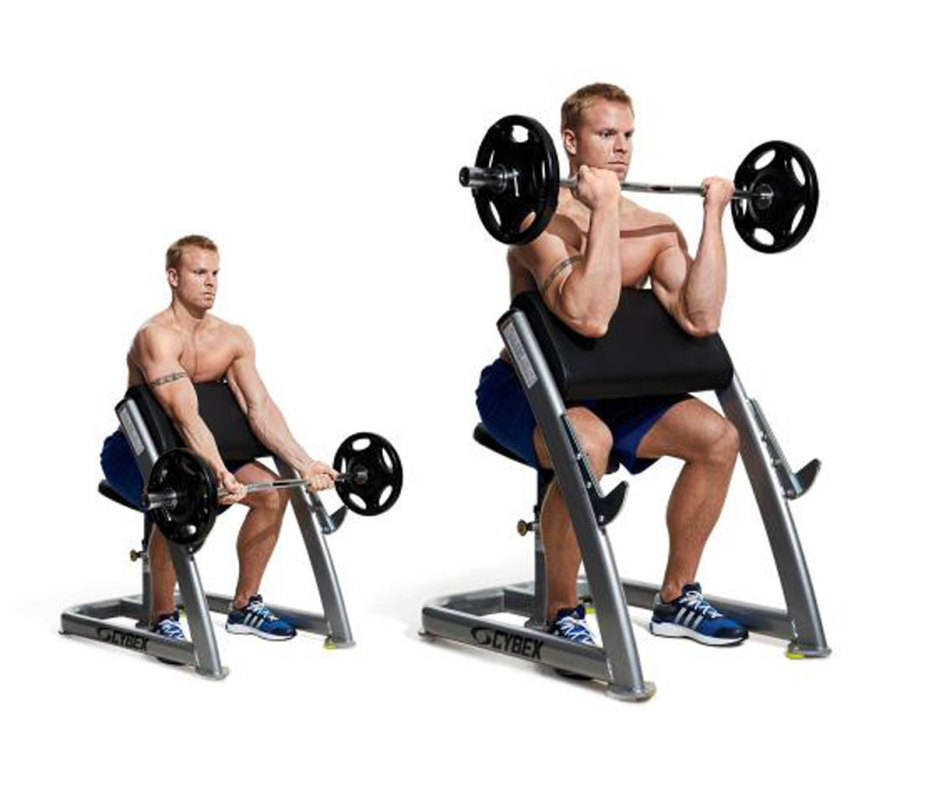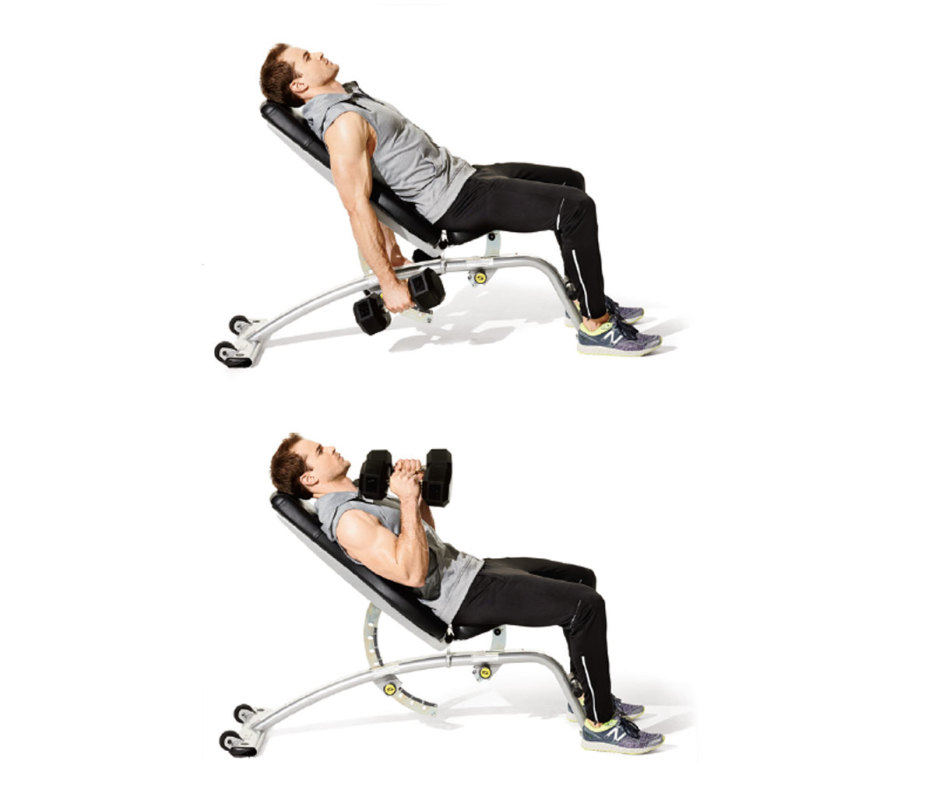How to Do Spider Curls for Bigger Biceps
There’s no shame in admitting you focus on arm exercises—or, more specifically, biceps exercises—and upper-body workouts to get bigger arms. And there’s no better way to fill out the sleeves of your favorite white T-shirt than a biceps curl variation like spider curls.
They’re the perfect complement to building your pecs with chest exercises and getting broad shoulders with shoulder workouts. Spider curls tweak the classic bicep curl by using a supinated grip (palms out) and leaning the front of your body against an incline bench to isolate the arms.
It’s a great way to trigger muscle growth, build strength, and get a great pump.
Follow along as we run through everything you need to know, including how to do spider curls with proper form, as well as alternatives and variations to try on your next arm day.
What Are Spider Curls?
The spider curl is a variation of the biceps curl that utilizes a straight bar, dumbbells, or an EZ-bar. Spider curl’s form is a little different than that of a classic curl as your body stays face-down throughout the movement and your arms hang perpendicular to the floor. When performed correctly, spider curls allow you to get a bigger range of motion and also isolate your biceps muscles in a way that regular curls don’t. Lifters after size or with physique-oriented goals can take their gains to the next level by incorporating this variation.
How to Do Spider Curls
- Adjust an incline bench to a 45-degree (or lower) incline, to start.
- Add plates to an EZ bar or place dumbbells in front of the bench (aka DB spider curl).
- Straddle the seat of the bench and press the front of your body against the back support.
- Position your chest slightly off the top edge so you have space to breathe and have better control over your shoulders and arms.
- Grab the weight(s) with a supine grip, palms facing away.
- Find a stable foot position. If you’re not too big, it’s even OK to keep a narrow stance and place your knees on the bench so your feet aren’t on the ground. Otherwise, flex your feet so your toes are bracing your weight.
- Engage your biceps to curl the weight. Pause and squeeze at the top position.
- With control, lower the weight down to the start position.
- That’s 1 rep.
Pro Tip
It’s important to utilize the full stretch so biceps can take advantage of a length-tension relationship that can be useful for growth.
Spider Curls Form Common Mistakes
When it comes to dumbbell spider curl form and typical mistakes, there are two glaring ones.
1. Setting Up the Bench Incorrectly
The first is setting up the bench too high. If your incline is closer to vertical, you’re not doing much to get the benefits of this variation since your arm angle will be nearly the same as when you do standing biceps curls. Look for that 45-degree incline, or even drop toward 30 degrees, depending on your arm length. That will ensure some distance between the torso and the arms to isolate both heads of the biceps much better.
2. Rowing the Weight
“Rowing” the weight is another common mistake with spider curls. When performing spider curls you want to make sure your body is stable and your arms move slowly. During the movement, your upper arms should be static and you should keep your arms and elbow from drifting backward as you curl.
Letting the elbows move toward the bench you’re lying on to create more of a “row” pattern, rather than a true “curl” pattern is an easy way to have the biceps forfeit plenty of their activity and involvement in the lift.
As a coaching cue, think about letting the arms travel slightly forward as the curl progresses, to ensure the biceps maintain in focus.
Benefits of Spider Curls
Similar to chinups, the spider curl allows the biceps to work from a position where the arms are in a place of shoulder flexion to start. Many lifters find benefits in not only isolating the biceps from these positions but also focusing more on the “peak,” thanks to the activity of a smaller muscle that rests underneath the biceps, called the brachialis.
Related: 50 Best Leg Exercises for 2024
Spider Curls Muscles Worked
In a perfect world, this is going to be as directly isolated to the upper arms as it can get. When done correctly, spider curls are all biceps and almost nothing else. For that reason, using this exercise as a supplement to a pull day workout is a smart call (if you’re not having an entire day dedicated to arms training already) because you’ll be able to perform them after the biceps have been used as a synergist for other larger pulling exercises like deadlifts, dumbbell rows, and chinups.
It wouldn’t be wise to fatigue them in such direct isolation early in your workout, assuming you’ll have more to do with them later in the workout. Keep this in mind, and focus on 3 to 4 sets of 10 to 15 reps.
Spider Curl Variations
You’d think a single-joint biceps curl exercise would create very limited options when it comes to variations and alternatives to the movement. Despite the obvious constraints, there are still some possible alternatives.
Spider Hammer Curl

James Michelfelder
Why It Works
Changing things to a neutral grip is a great way to further target the brachialis muscle, which lies deep in the biceps and helps push the “peak” of the upper arm to more prominence. This uses the same face-down setup on an incline bench set to 45 degrees or lower. Of course, a neutral grip can only be achieved by using a pair of dumbbells, so the instructions here is simply to hold dumbbells with palms facing toward one another.
How to Do It
- Adjust an incline bench to a 45-degree (or lower) incline, to start.
- Place dumbbells in front of the bench.
- Straddle the seat of the bench and press the front of your body against the back support.
- Position your chest slightly off the top edge so you have space to breathe and have better control over your shoulders and arms.
- Grab the weights with a supine grip, palms facing away.
- Engage your biceps to curl the weights up. Pause and squeeze at the top position.
- With control, lower the weights down to the start position.
- That’s 1 rep.
Pro Tip
Remember to avoid “rowing” the weight to the top position and keep the elbows away from the body as best you can. Keep the movement under control, especially in the lowering phase.
Cable Spider Curl

Marius Bugge
Why It Works
Setting up your bench in front of a dual cable pulley allows you to play around with different angles and resistance profiles to challenge the biceps differently as you curl. When using dumbbells or a barbell, you’re forced to work against gravity pulling the weight straight down. By being a few feet in front of cables pulling your arms forward, it challenges your arms to create more consistent force throughout the entire range of motion.
How to Do It
- To start, set a bench to 45 degrees in front of a cable machine.
- Lie face down with your torso and stomach pressed against the bench.
- Add a rope attachment to the cable machine and adjust it until it’s at the bottom of your arm’s range of motion when fully extended.
- Slowly curl the rope, pause at the top, and squeeze your biceps.
- Lower with control to the start position.
- That’s 1 rep.
Spider Curl Alternatives
While spider curls are a great option for growing your biceps, their range of motion may not be suitable for everyone. Luckily, there are plenty of alternatives that can offer strength gains and increased muscle size.
Preacher Curl

Beth Bischoff
Why It Works
Preacher curls closely mimic the movement pattern of spider curls. Preacher curls have their own machine setup that enables the lifter to keep their arms at an angle positioned away from the body just like a spider curl, with one key distinction: Now there’s a support behind the triceps for the arms to rest on, creating more stability. This encourages more isolation and a more honest lift without relying on stabilizers. To do these, set up either standing or seated in the preacher curl setup. These can be done using a single dumbbell one arm at a time, or with both arms using a straight bar or EZ curl bar.
How to Do It
- Sit at a preacher bench, and adjust the seat height so your armpits touch the top of the bench.
- Grasp an EZ-curl bar with a shoulder-width, underhand grip (palms facing out, aka supinated).
- Starting with your arms extended, curl the bar up until your forearms are perpendicular to the floor, keeping the backs of your upper arms against the bench.
- Pause and squeeze at the top position.
- With control, lower the bar down under control until your elbows are fully extended but not locked out.
- That’s 1 rep.
Pro Tip
Keep the armpits in contact with the apex of the pad and perform the curl motion. You can use either side of most preacher curl machines. The most common side leaves the arms at a 45-degree angle to the floor, but it may be more comfortable or isolated (or both) for you to use the opposing side so the arms hang straight down.
Incline Dumbbell Curl

James Michelfelder
Why It Works
Much like the spider curl, the incline curl forces your arms to work through a longer range of motion than a traditional curl. Because the dumbbell travels a greater distance from the extended start position to your shoulder during incline curls, they can be much more challenging than other curl variations. The dumbbell incline curl also isolates the biceps more than standard curls, which work not only your biceps but forearms and shoulders, too. It’s a great spider curl and preacher curl alternative, because it doesn’t put as much strain on your biceps.
How to Do It
- To start, set a bench to 45 degrees.
- Sit on the bench with a dumbbell in each hand, arms down at your sides.
- Keep your arms tight and curl the dumbbells until they reach shoulder height.
- Pause and squeeze at the top position.
- Slowly lower the dumbbells back down to your starting position.
- That’s 1 rep.
Pro Tip
While your arms can lay limp at your sides to start, once you begin the curling motion, make sure you’re doing so with control.
Related: Most Beautiful Woman in the World, According to Science

